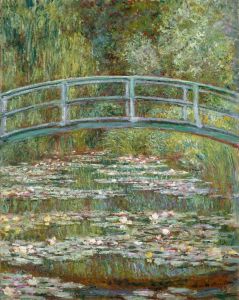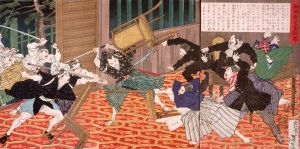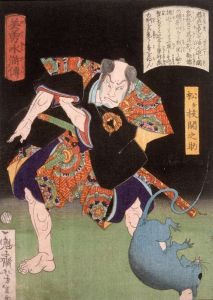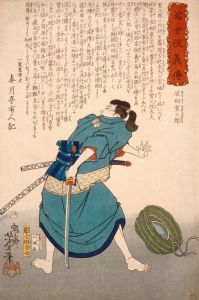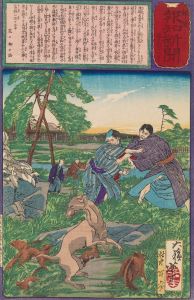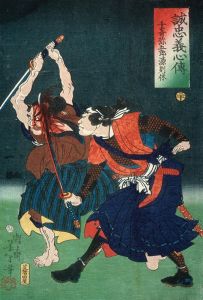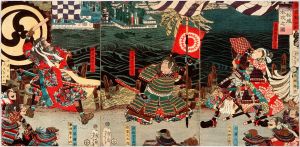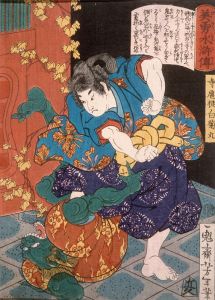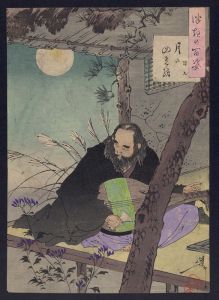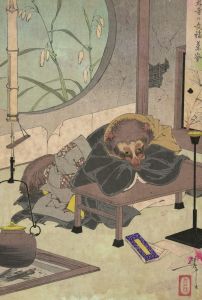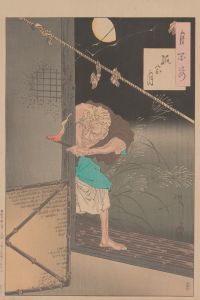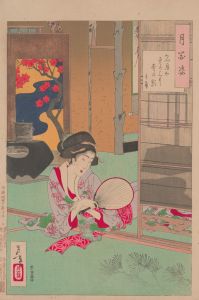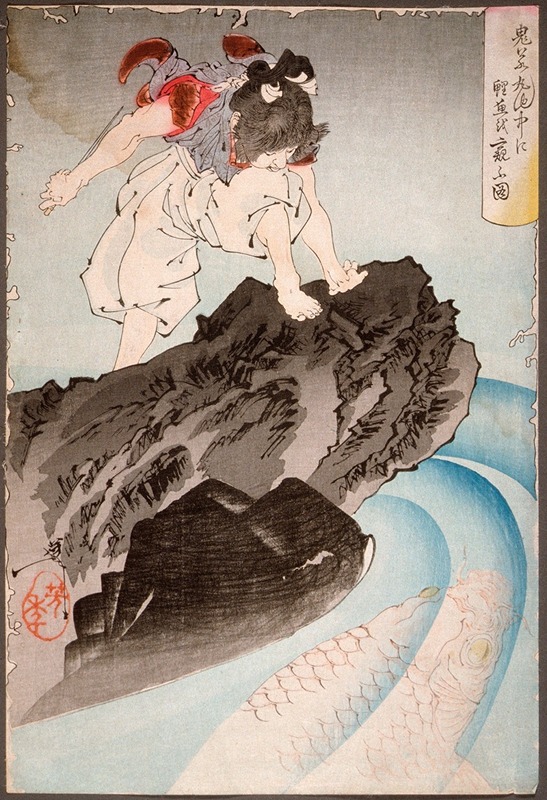
Oniwakamaru Observing the Great Carp in the Pond
A hand-painted replica of Tsukioka Yoshitoshi’s masterpiece Oniwakamaru Observing the Great Carp in the Pond, meticulously crafted by professional artists to capture the true essence of the original. Each piece is created with museum-quality canvas and rare mineral pigments, carefully painted by experienced artists with delicate brushstrokes and rich, layered colors to perfectly recreate the texture of the original artwork. Unlike machine-printed reproductions, this hand-painted version brings the painting to life, infused with the artist’s emotions and skill in every stroke. Whether for personal collection or home decoration, it instantly elevates the artistic atmosphere of any space.
Tsukioka Yoshitoshi (1839–1892) was a prominent Japanese ukiyo-e artist, known for his innovative and dramatic woodblock prints. One of his notable works, Oniwakamaru Observing the Great Carp in the Pond, is a striking example of his artistic style and storytelling ability. This print is part of Yoshitoshi's broader body of work, which often depicted historical, mythological, and supernatural themes.
The artwork illustrates a scene from the legendary tale of Oniwakamaru, a childhood name of the famous Japanese warrior monk Benkei. According to the story, Oniwakamaru, as a young boy, was sent to a temple to train. During his time there, he encountered a giant carp in a pond. The carp was said to be a manifestation of a malevolent spirit or a supernatural being. In Yoshitoshi's depiction, the young Oniwakamaru is shown observing the carp with a mixture of curiosity and determination, foreshadowing his future as a fearless and powerful figure.
Yoshitoshi's print captures the tension and drama of the moment through his use of bold lines, dynamic composition, and vivid colors. The carp is rendered with intricate detail, emphasizing its size and otherworldly presence, while Oniwakamaru's expression and posture convey his bravery and resolve. The surrounding environment, including the water and foliage, is stylized in a way that enhances the overall atmosphere of the scene.
This work reflects Yoshitoshi's mastery of the ukiyo-e tradition during a period of significant cultural and artistic transition in Japan. By the late 19th century, Western influences were becoming increasingly prominent, and traditional Japanese art forms like ukiyo-e were facing challenges. Yoshitoshi, however, managed to adapt and innovate within the medium, producing works that resonated with contemporary audiences while preserving the essence of traditional Japanese aesthetics.
Oniwakamaru Observing the Great Carp in the Pond is an example of Yoshitoshi's ability to blend storytelling with visual artistry. It demonstrates his skill in portraying dramatic narratives and his deep engagement with Japanese folklore and history. Today, this print is appreciated not only for its artistic merit but also as a representation of the rich cultural heritage of the Edo and Meiji periods.





